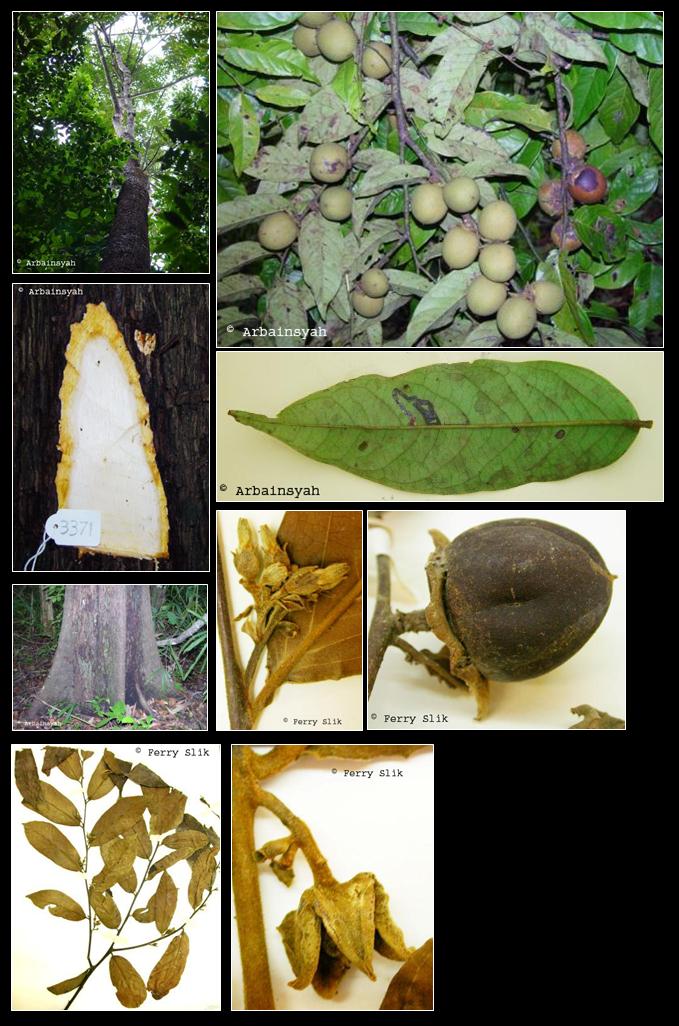Diospyros macrophylla Blume, Bijdr. Fl. Ned. Ind. (1825)
Latin for 'large leaved'.Synonyms
Diospyros cystopus Miq.
Diospyros pachycalyx Merr.
Diospyros cystopus Miq.
Diospyros suluensis Merr.
Diagnostics
Mid-canopy tree up to 38 m tall and 90 cm dbh. Stipules absent. Leaves
alternate, simple, penni-veined, hairy below. Flowers ca. 3 mm in diameter,
yellow-cream, with corolla tube, placed in small bundles in leaf axils. Fruits
ca. 37 mm long, yellow-orange-brown, fleshy berry.
Description
Tree to 38 m tall and 90 cm diameter. Twigs velvety in young parts, becoming glabrous with age.
Leaves chartaceous, not bullate between veins, finely velvety on midrib and lateral veins below
to almost glabrous, tending to dry black above or on both sides; elliptic or oblong-elliptic,
8-18 x 3-7 cm, base cuneate to rounded, margin not undulate, apex acuminate; midrib sunken above;
lateral veins prominent below, 7-13 pairs, diminishing toward leaf margin; intercostal venation
very fine and prominulous below, scalariform as well as reticulate; petiole 0.3-0.5 cm long.
Male inflorescences 0.5-2 cm long, each bearing 3-20 flowers. Male flowers with calyx tubular,
divided at top into 4-5 small teeth; corolla salverform, to c. 0.8 cm long. Female inflorescences
0.5-4 cm long, each bearing 1-5 flowers. Female flowers with calyx divided deeply into 4-5 plicate-
triangular valvate lobes; pedicels sometimes conspicuously black-hairy. Fruits 1-4, on stout stalks
of 0.5-4 cm long, velvety when young, maturing glabrous, globose to oblong, to c. 6.5 x 5.5 cm,
not ribbed, smooth or sometimes shallowly longitudinally puckered; pulp edible. Fruit calyx
accrescent, stretched into a 4-5 sided woody plate with narrow reflexed margins, either 3-4 cm
diameter and not extending beyond the periphery of the fruit, or massively enlarged to 8 cm
diameter and extending beyond the periphery of the fruit, veins very faint or invisible.
[from Tree Flora of Sabah and Sarawak]
Ecology
In undisturbed forests up to 1000 m altitude. On alluvial and dry (hillside
and ridges) places with sandy to clay soils, also on limestone.
Uses
The wood is locally used for making sticks and knife handles. Fruits edible.
Distribution
Sumatra, Java, Borneo, Philippines, Celebes.
Local names
Borneo: Kayu arang, Kayu malam, Keling, Undringan, Undungan.
